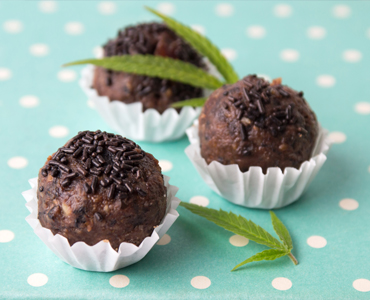
Developing & reformulating products using cannabis
By Karen Proper
Regulation Research & DevelopmentHow do I work with a cannabis company to develop or reformulate my products?

By Karen Proper
In April 2017, Bill C-45, The Cannabis Act, was introduced to the House of Commons. When combined with Bill C-46, An Act to Amend the Criminal Code, recreational cannabis is expected to become legal across Canada in August 2018, pending a Senate vote. It is important to note that these Acts do not include regulations pertaining to edibles containing cannabis and cannabis concentrates. The Government of Canada recognizes the complexity, potential health risk and harms associated with these products and for that reason has committed to taking “an appropriate amount of time to develop and implement regulations that will result in safe edible products eventually coming into market.” This timeframe is one year after the Cannabis Act will come into force.
And Canadians are counting down the days. A study completed by Sylvain Charlebois of Dalhousie University (Cannabis- infused food and Canadian consumers’ willingness to consider recreational marijuana as a food ingredient) found that 46 per cent of Canadians would be willing to try cannabis-infused products if they were available. These findings, coupled with the results from a 2016 Deloitte study (Recreational Marijuana, Insights and Opportunities) indicating a potential market opportunity of up to $22.6 billion dollars for the ancillary markets alone, have manufacturers scrambling to get ready for legalized cannabis edibles in 2019.
infused food and Canadian consumers’ willingness to consider recreational marijuana as a food ingredient) found that 46 per cent of Canadians would be willing to try cannabis-infused products if they were available. These findings, coupled with the results from a 2016 Deloitte study (Recreational Marijuana, Insights and Opportunities) indicating a potential market opportunity of up to $22.6 billion dollars for the ancillary markets alone, have manufacturers scrambling to get ready for legalized cannabis edibles in 2019.
Cannabis edibles are understood to be any food or beverage product containing cannabis or cannabis concentrates. In countries where cannabis is already legal, a plethora of cannabis products are available in the market. Largely, cannabis has found a home in sweet-based products including chocolate, brownies, ice cream, mints, tea and candies; however, savoury applications in meals and salads are emerging. As with all food and beverage products, consumers will expect cannabis edibles to taste good, have a pleasing appearance and aroma, and possess a desirable texture. Let’s face it, if it doesn’t meet consumer expectations, consumers will not make repeat purchases.
Cannabis imparts a very distinct flavour and aroma to the product into which it is incorporated. This flavour and aroma has been described as “musky” or “herbal,” and people purportedly either love it or hate it. Numerous different strains of cannabis exist – each with its own distinct flavour and aroma – ranging from fruity, spicy, sweet and tart to citrus. To cater to the subset of the population that embraces the flavour of cannabis, it will be important to understand which strain will best complement each food or beverage. Formulating with specific spices, flavours and sugars will also be key in creating an appealing product. Alternatively, for those who do not enjoy the flavour or aroma of cannabis, finding a supplier who can provide cannabis in a “tasteless” form will be critical. Various chemical extraction and purification methods for THC are currently in use, and some suppliers are incorporating an additional step of distillation to remove the inherent flavours and aroma. The resulting ingredients will be worthy of consideration for various product applications when edibles become legal.
It is also well known that cannabis concentrates and isolates are hydrophobic substances, meaning they are incompatible with water. This presents a challenge when developing cannabis-infused beverages. Luckily, encapsulation and nano-emulsion technology could be used to create cannabis ingredients that are easily incorporated into solution and result in a product that is both visually appealing and homogeneous in nature. An additional benefit of these technologies is an increased bioavailability of THC, permitting fast and complete absorption by the body.
Food safety is a key consideration for the development and manufacture of any food and beverage products and cannabis edibles are no exception. Hurdles, such as lowering the pH, processing at high temperatures and lowering the water activity, serve to control pathogens and keep our food supply safe. But how do cannabis ingredients fare in these conditions? Is the potency of THC impacted by high processing temperatures? Are cannabis ingredients, in their various forms, susceptible to rancidity? How stable is THC in highly acidic conditions? How stable is it throughout the shelf life of the product? The answers to these questions are product dependent and require testing to obtain confident and reliable results.
The development of cannabis food or beverage products requires creative and technical expertise to achieve the desired sensory and performance attributes. The product must also be processed and packaged in such a way to achieve food safety and maintain optimal quality throughout its shelf life. Partnering with a knowledgeable and trusted consultant to navigate the challenges during the development and commercialization phases of a cannabis product is the key to success.
Karen Proper is Technical Manager, Product and Process Development, at NSF International. For more information visit www.nsfcanada.ca
Print this page